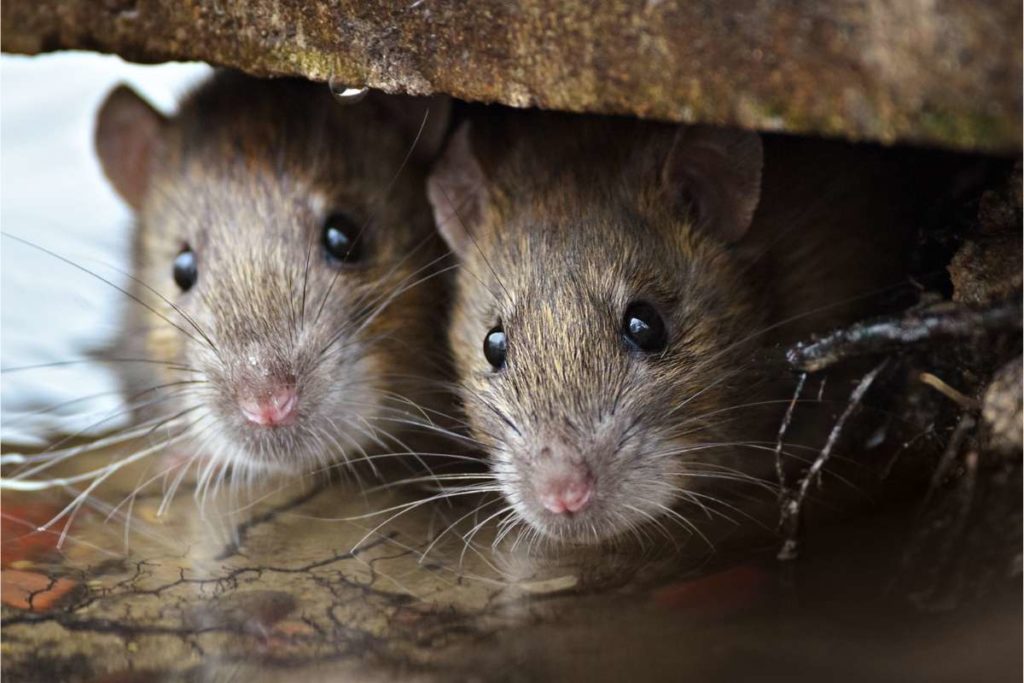Where Do Rats Like To Hide
Rat infestations are a growing problem in the UK, with many cities seeing surging numbers. These urban loving rodents are not only unpleasant, but they can also carry disease and can cause havoc by nibbling on your wiring.
There are two types of rat scurrying around the UK, the common brown rat and the black rat, and both can be found in houses.
By asking yourself, where do rats like to hide? And checking for signs of infestation in these places often, you can reduce the risk of rats taking up residence in your home and deal with them quickly if they’re already there.

What To Look Out For
Wherever Rats take up residence, they leave tell-tale signs of their presence which include the following:
- Noise: One of the first signs that most people will notice to indicate there are rats in a home is the sound of scuttling and scratching feet in the walls, attic, or other infested area.
- Droppings: Rat droppings are typically pellets the size of long-grains of rice that are dark in colour. You will usually find a lot of them in one place.
- Chewing: Rats will chew on most materials in the home, including wood, plaster, and plastic. This may be particularly evident around potential food sources.
- Smear Marks: Rats will leave greasy trails known as smear marks as they brush up against your walls. These will appear as dark brown patches along walls and skirting boards and are often more pronounced around the entry point.
- Footprints: If the infestation is somewhere rarely cleaned, like an attic or loft, you may see small tracks left in the dust by their feet and tail. However, you are unlikely to spot these before noticing the other signs.
Where Do Rats Like to Hide?
- Attics and Lofts: One of the main places where rats can proliferate is attics and lofts. Naturally, timid animals, these well-insulated parts of your property are perfect for rats to nest away from the activity of the house.
- Wall Cavities: Rats in wall cavities will often gnaw on your electrics, potentially leading to house fires.
- Gardens and Sheds: Gardens can be a hot spot for rats. Especially if you have a compost bin or use your shed to store things like bird feed. Rats in gardens will usually leave fairly obvious digging holes.
- Basements, Cellars, and Garages: Like attics and lofts, these scarcely used areas of your home are a haven for rats.
- Kitchens: Although rats will usually shy away from contact with humans, a kitchen full of food can overpower these instincts. Rats are attracted to Kitchens when food is left to spoil in the open. Bins that are not properly closed or improperly stored food are prime targets.
Drains and Sewers
If you asked the average person, ‘Where do rats like to hide?’, the first place most think of is the sewers. While it’s true that sewers are the most common urban rat habitat, many of us don’t consider how this can lead rats into our homes.
Poorly fitted drainage or fittings that have deteriorated can give pests an easy route from the sewer into your home.
If you have an infestation and have sought the help of professional rat control services, they may tell you that you need to contact a drainage engineer to get to the root of the problem.
If You Think You Have an Infestation
Watching for signs of rats and keeping areas clean and free of food will vastly reduce the risk of a rat infestation in your property. However, if you see any of the signs we’ve discussed here, you should contact a professional pest controller.
Trying to tackle the problem yourself without the necessary expertise and equipment could make the situation worse. Rat infestations are a public health concern and should be dealt with by a pest control expert.
